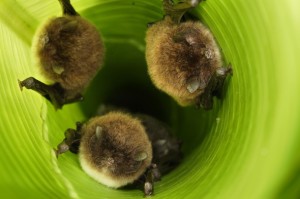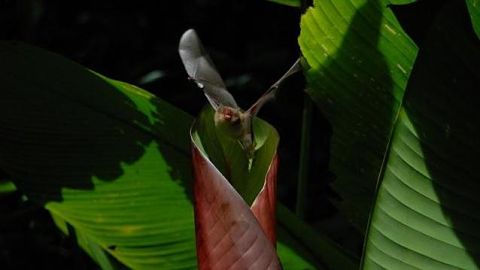Costa Rica News – Costa Rica’s bats evolved an interesting trick to help them hear. They use leaves as an ear horn, to funnel sound from above. The Spix’s disc-winged bat was named for suction cups it has on its wings and feet. They roost in the leaves of plants outside of caves, instead of living inside the caves as most bats do.
 The leaves form a tube as they flatten out from their natural folded state. The bats use them for only one day before finding another folded one. They stay together in groups of five or six for many years, a rarity among bats.
The leaves form a tube as they flatten out from their natural folded state. The bats use them for only one day before finding another folded one. They stay together in groups of five or six for many years, a rarity among bats.
An old study showed that bats weren’t good at differentiating the sounds made by their roost mates and those from strangers. This got researchers thinking that maybe the leaves were changing or amplifying the sounds of the bats’ cries.
They recorded 79 one-note “inquiry” cries and 65 20-25 sound “response calls,” to start a new experiment. They then played the calls from inside and outside the leaf with a microphone at the opposing end, capturing the sound.
The results showed that the leaves don’t amplify sound very well, only by 1-2 decibels, an inaudible difference, but the funneling effect of curled or folded leaves did make a big difference in how the bats could hear those flying overhead.
With the leaf, the bat call was heard 10 decibels louder. That makes a big difference; it increases the distance from which a flying bat is heard by 65 feet. Since the cries are distorted, it’s up to the flying bat to recognize the familiar sounds of their own roost and join them. Many animals use objects to amplify their own calls but few use them to hear the calls of others.

